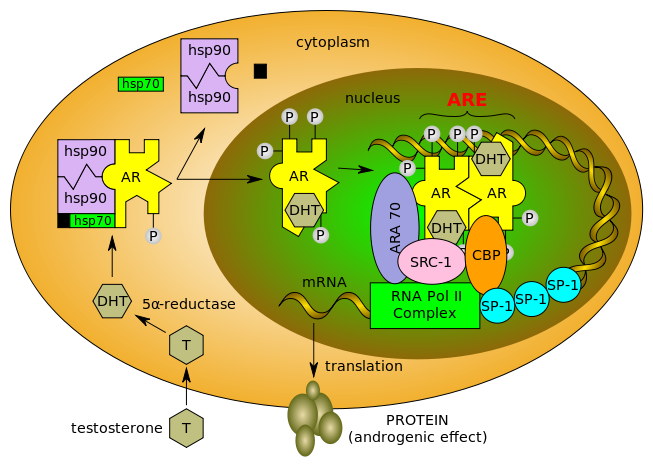Cancer metabolism is fast becoming an area to watch out for in R&D. Last month I tweeted that I was attending a one day meeting at NY Academy of Sciences on Cancer Metabolism with keynote speakers Drs Lou Cantley and Craig Thompson. Jonathan Mandelbaum (@biotechbaumer) responded saying it looked like a dress rehearsal of another related meeting he was attending the following week. That was too good an opportunity to miss, so I invited Jonathan to consider guest posting a summary of the Keystone event he attended here on Pharma Strategy. I’m delighted to say he kindly took me up on the offer and what follows is Jonathan’s synopsis, including some references he chose to illustrate the key points, most of which are open access.
Jonathan has the honour of being the first formal guest post from an industry scientist, although the first informal one went to Al Lalani, Ph.D of Regeneron, who sent in an excellent and very amusing summary of last year’s ASCO abstracts. The original guest post was from an industry analyst, Adam Bristol, Ph.D.
I hope to post more guest blogs here from scientists going forward, as they add variety and different perspectives on the evolution of the cancer R&D process.

Jonathan Mandelbaum
To give you all some brief background, Jonathan is currently a postdoctoral fellow at Millennium Pharmaceuticals, Inc. based in Cambridge, MA. He received his Ph.D. in Cellular, Molecular and Biophysical Studies from Columbia University. His thesis focused on understanding the functional consequences of recurrent genetic lesions in human diffuse large B-cell lymphoma. Prior to Columbia University, he obtained his Bachelor of Science from McGill University in Montreal, Canada and spent his summers as a research student at the Campbell Family Institute for Breast Cancer Research within the Ontario Cancer Institute.
The 2012 Keystone Symposia on Cancer and Metabolism was a hot meeting, albeit in the cold mountains of Banff, Canada. Research into how cancer cells rewire their metabolism to cope with increased energetic and biosynthetic demands has been reinvigorated in recent years, in large part due to several prominent researchers that were featured at the meeting, such as Craig Thompson, Lou Cantley, Reuben Shaw and David Sabatini.
Talks and posters from Agios Pharmaceuticals, Inc., Novartis, Pfizer and Millennium Pharmaceuticals, Inc., provided additional insight into how industry is thinking of translating these latest findings into novel therapeutics. Without getting into much detail (since much of the data remains unpublished), I will summarize some main themes of the conference and takeaway thoughts on future directions for drug discovery.
Central to the conference is the observation known as the Warburg effect, identified by Otto Warbug in 1924. Essentially, Warburg saw that cancer cells, despite being flush with oxygen, rely on aerobic glycolysis for their energy needs, resulting in an excess production of lactate. This phenomenon is common to normal proliferating cells, however, cancer cells have deregulated this process in part through activation of various oncogenic pathways (eg. PI3K, RAS-MAPK) and reliance on the M2 isoform of Pyruvate Kinase (PKM2) (see review by Vander Heiden et al., 2009). Many talks focused on how oncogenic activation of these pathways regulates the activity of different metabolic pathways (eg. glycolysis, the pentose phosphate pathway shunt, amino acid metabolism). For example, it’s known that cells transformed with MYC are dependent on glutamine metabolism for their survival (see Wise et al., 2008).
Is this metabolic rewiring simply an epiphenomenon of oncogene activation or is it truly important for tumorigenesis? Interestingly, mutations in several different metabolic enzymes have been found in certain cancers. Fumarate Hydratase (FH) and Succinate Dehydrogenase (SDH), enzymes important for the TCA cycle, are inactivated by mutations in rare forms of cancer, implicating mitochondrial dysfunction in these tumors. Additionally, recurrent gain-of-function mutations in isocitrate dehydrogenase (IDH1/2) have been found in a variety of tumor types, such as glioma and AML. Most recently, PHGDH, an enzyme important for serine metabolism, was suggested to be the target of a locus recurrently amplified in melanoma (Locasale et al., 2011).
Several talks discussed how these mutations might be important for tumorigenesis. For example, FH-deficient renal tumors have a deregulated anti-oxidant response through activation of the Nrf2 transcription factor (Adam et al., 2011). The authors suggest that increased fumarate in these cancer cells can promote a post-translational modification of proteins called succination, which can affect protein function. Gain-of-function mutations in IDH1/2 result in excessive production of the metabolite 2-HG (Dang et al., 2009), which can inhibit the activity of histone demethylases, thus affecting the epigenetic regulation of gene expression (Figueroa et al., 2010). At least for FH and IDH driven tumors, the common thread appears to be that metabolites can play critical roles in regulating a multitude of cellular processes outside of metabolism itself.
How might this basic research be translated into novel therapeutics?
Two obvious drug targets I mentioned, IDH1/2 and PKM2, are in fact drug programs being pursued by Agios Pharmaceuticals, Inc. IDH1/2 presents an intriguing opportunity as the mutations are gain-of-function; drugs that can specifically target the mutant protein, akin to imatinib and vemurafinib, might be effective cancer therapeutics.
Although I did not discuss this topic, the autophagy pathway was another focus for several talks at the meeting. As this pathway is important for cells to cope with metabolic stress, and cancer cells face challenges such as hypoxia and nutrient deprivation, targeting autophagy might be a beneficial therapeutic strategy for cancer treatment.
Ultimately, understanding how different genetic dependencies in cancer reprograms cells to be specifically reliant on certain metabolic pathways, might provide synthetic lethal opportunities for drugs that target metabolic enzymes in those pathways.
From a drug discovery perspective, the conference highlighted for me two critical challenges going forward:
- What therapeutic window might exist for drugs targeting metabolic pathways? Jeff Rathmell emphasized an important observation that activated lymphocytes are dependent on glycolysis, similar to cancer cells, for their survival. Thus, agents targeting glycolysis might very well have immunological side effects.
- Many talks highlighted the plastic and redundant nature of metabolic pathways. Inhibiting one pathway can lead to adaptive flux through another pathway, or even drive metabolic enzymatic reactions in reverse, in order to compensate for that initial block. Understanding and overcoming these pathway redundancies (somewhat similar to the current state of signal transduction drug discovery) will be a key challenge going forward for cancer metabolism translational research.
Jonathan Mandelbaum is currently employed at Millennium Pharmaceuticals, Inc. The views expressed in this article are his own opinion and are not shared by his employer.
References:
 Vander Heiden MG, Cantley LC, & Thompson CB (2009). Understanding the Warburg effect: the metabolic requirements of cell proliferation. Science (New York, N.Y.), 324 (5930), 1029-33 PMID: 19460998
Vander Heiden MG, Cantley LC, & Thompson CB (2009). Understanding the Warburg effect: the metabolic requirements of cell proliferation. Science (New York, N.Y.), 324 (5930), 1029-33 PMID: 19460998
Wise DR, DeBerardinis RJ, Mancuso A, Sayed N, Zhang XY, Pfeiffer HK, Nissim I, Daikhin E, Yudkoff M, McMahon SB, & Thompson CB (2008). Myc regulates a transcriptional program that stimulates mitochondrial glutaminolysis and leads to glutamine addiction. Proceedings of the National Academy of Sciences of the United States of America, 105 (48), 18782-7 PMID: 19033189
Locasale JW, Grassian AR, Melman T, Lyssiotis CA, Mattaini KR, Bass AJ, Heffron G, Metallo CM, Muranen T, Sharfi H, Sasaki AT, Anastasiou D, Mullarky E, Vokes NI, Sasaki M, Beroukhim R, Stephanopoulos G, Ligon AH, Meyerson M, Richardson AL, Chin L, Wagner G, Asara JM, Brugge JS, Cantley LC, & Vander Heiden MG (2011). Phosphoglycerate dehydrogenase diverts glycolytic flux and contributes to oncogenesis. Nature genetics, 43 (9), 869-74 PMID: 21804546
Adam J, Hatipoglu E, O’Flaherty L, Ternette N, Sahgal N, Lockstone H, Baban D, Nye E, Stamp GW, Wolhuter K, Stevens M, Fischer R, Carmeliet P, Maxwell PH, Pugh CW, Frizzell N, Soga T, Kessler BM, El-Bahrawy M, Ratcliffe PJ, & Pollard PJ (2011). Renal cyst formation in Fh1-deficient mice is independent of the Hif/Phd pathway: roles for fumarate in KEAP1 succination and Nrf2 signaling. Cancer cell, 20 (4), 524-37 PMID: 22014577
Dang L, White DW, Gross S, Bennett BD, Bittinger MA, Driggers EM, Fantin VR, Jang HG, Jin S, Keenan MC, Marks KM, Prins RM, Ward PS, Yen KE, Liau LM, Rabinowitz JD, Cantley LC, Thompson CB, Vander Heiden MG, & Su SM (2009). Cancer-associated IDH1 mutations produce 2-hydroxyglutarate. Nature, 462 (7274), 739-44 PMID: 19935646
Figueroa ME, Abdel-Wahab O, Lu C, Ward PS, Patel J, Shih A, Li Y, Bhagwat N, Vasanthakumar A, Fernandez HF, Tallman MS, Sun Z, Wolniak K, Peeters JK, Liu W, Choe SE, Fantin VR, Paietta E, Löwenberg B, Licht JD, Godley LA, Delwel R, Valk PJ, Thompson CB, Levine RL, & Melnick A (2010). Leukemic IDH1 and IDH2 mutations result in a hypermethylation phenotype, disrupt TET2 function, and impair hematopoietic differentiation. Cancer cell, 18 (6), 553-67 PMID: 21130701

 Fast forward two years and there has been a new paper in Cancer Discovery by a different group (see Frese et al., (2012) from the University of Cambridge in the references) looking at the mechanistic role of nab-paclitaxel in pancreatic adenocarcinomas.
Fast forward two years and there has been a new paper in Cancer Discovery by a different group (see Frese et al., (2012) from the University of Cambridge in the references) looking at the mechanistic role of nab-paclitaxel in pancreatic adenocarcinomas.


